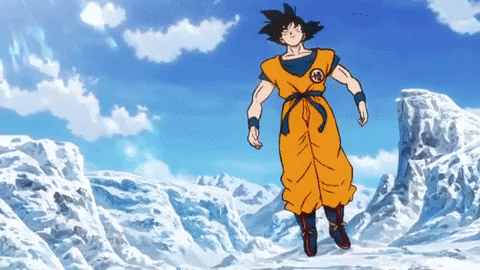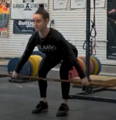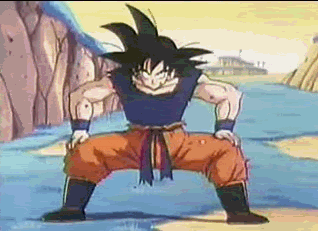The BEST Training Exercises For The Olympic Lifts

So the dowel rods we have built and use, are basically the same length as the barbell. In addition, the rings we have mitered out right in line with the barbell. We like this because it tactile cues the athlete where to put their hands.

1. From The Floor To The Knee
Do five to ten reps starting from just short of a quarter of the shin. The cool thing with just using the dowel to imprint proper technique for the snatch, even as light as it is, the athlete can still feel their hamstrings as their knees clear back.

Do five to ten reps starting from just short of a quarter of the shin. The cool thing with just using the dowel to imprint proper technique for the snatch, even as light as it is, the athlete can still feel their hamstrings as their knees clear back.
2. Pause Below The Knee To The Hip
In this one, we want the athlete to feel the knees clear back and then reciprocate forward when the dowel travels through no man’s land. This is where a lot of people lose the bar, especially in the snatch.
Again, do five to ten reps of this area of positional work with the dowel.
3. Full Snatch From The Hips
Next, we want athletes to do five to ten reps of full snatches from the hips. The focus needs to be on the turnover, getting the elbows behind the back, and punching into a solid lockout position regardless of the light load.
These three exercises with just the dowel need to be utilized to get things started. From here we head into using the dowel rod and PowerLastics to improve the clean and snatch technique.
4. Banded Snatch Press In The Hole
So the first three exercises with just the dowel rod instilled the knee movement of how to get into the hip and then into the full snatch.
Now this movement and the next are great for beginner lifters or lifters who need to wake up their shoulders.

With the PowerLastic band being stood on with the ends attached to the dowel rod, the athlete goes into the bottom of the squat with the dowel behind the neck. The whole purpose of using the PowerLastic band is that it creates some tension to help the athlete to feel the press as they get into the catch position in the snatch. This will enhance the athlete’s ability to receive the bar in the deep catch. It is also is not extremely down at the bottom because most of the tension is at the top.
Do this for five to ten reps.
5. Banded Overhead Squat
Upon finishing the last banded snatch press in the hole, squat up with the dowel rod still extended overhead. This will create more tension on the PowerLastic band. In turn, this will force the athlete to stay engaged through the upper body and pressing up.
Do this for five to ten reps.

This movement and the previous movement are great to increase tension to light up the shoulders and triceps together when receiving the snatch. The movements are also just great for warming up. Finally, these two movements are great substitutes for athletes who struggle with an empty barbell doing these two movements.
6. Banded Pull To The Hip
The purpose of this exercise is utilized to help feel what the upper body needs to do in relation to what the knees are doing during the pull of the bar off the floor.

With the athlete holding the dowel rod, we want the PowerLastic band either anchored to a jerk block or held by a coach pulling slightly forward. This creates more tension. We want the athlete to flex their wrists and have their lats more active while going from the floor to the knee. Athletes who are too relaxed with their upper body will have the bar drift forward tremendously. In the same breath, we don’t want to be super tight so that we bend our elbows tremendously, but we want to have action from the wrist and lats to keep the bar tight, as well as trigger good knee movement.
Do this for five to ten reps as a good warm-up or a drill after a training session to improve knee motion and keep the bar tighter.
7. Banded Pull Below The Knee To The Hip
The whole point of this last movement is to feel a ton of tension in the hip. We see a lot of athletes lifting getting their chest way behind the bar at the hip. They end up jumping backward, missing the snatch forward, or having the clean crash on them. If we can learn how to keep the chest forward while the bar is in the hip, learning that overall general feeling, we will be able to be more vertical on the finish.

The athlete stands on the band with the band connected to the dowel rod. The tension from the band pulls the dowel rod down. Below the knee, there is virtually no tension. Passing the knee, the tension picks up.
Do this for five to ten reps. Taller athletes will have more tension at the top. Use this as the last warm-up before getting into the workout.
Recap
The whole purpose is to prime the technique of the lifting movements by utilizing the dowel rod and PowerLastic bands. It creates a focus on the chest finishing vertically, the knees going back before reciprocating, and holding the proper upper body tension through the pull and into the finish. The exercises can be (and should be) used for warm-up movements as well as end-of-workout technique enhancers. Go ahead and give the movements a try, leaving a comment below with how it all goes.
DANE MILLER
Dane Miller is the owner and founder of Garage Strength Sports Performance. He works with a select handful of clients on building comprehensive programs for fitness and nutrition. Several times a year he leads a workshop for coaches, trainers, and fitness enthusiasts.


